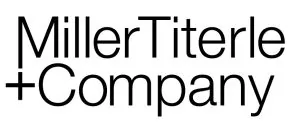Introduction
The “Canadian Take-Over Bid Rules – Overview” Practice Guides summarize potential application of Canadian securities and other legal requirements to public M+A transactions made under take-over bids in Canada.
As an alternative to a take-over bid[1], Acquirors may acquire equity securities of a Target Company through a one-step transaction under the Target Company’s governing statute. This Practice Guide summarizes such transactions.
Alternative Structures. Going private business combination acquisitions can be for cash consideration, securities of the acquiror, or a combination, and various structures can be utilized, including the following;
- Consolidation or capital reorganization squeeze out, pursuant which the share capital of the Target Company is reorganized whereby, as a result of consolidation of outstanding shares, holders become entitled to receive only a fractional share, or the existing share capital is otherwise altered, so that the shares held by minority shareholders are exchanged for cash or other consideration.
- Amalgamation squeeze out, pursuant to which the Target Company is amalgamated with an affiliate (e.g., subsidiary) of the Acquiror and Target Company shareholders exchange their shares for cash (redeemable preferred shares which are redeemed for cash) or other securities of the amalgamated company.
- Triangular amalgamation, pursuant to which the Target Company is amalgamated with a subsidiary of the Acquiror under which the Acquiror issues shares to Target Company shareholders and the amalgamated company becomes a wholly-owned subsidiary of the Acquiror.
- Plan of arrangement, pursuant to which the rights of Target Company securityholders are “arranged” in a court approved process under Canadian corporate legislation and their outstanding securities exchanged, amended or reorganized.
Shareholder Approval. All such transactions require approval by Target Company shareholders (e.g. at a special meeting convened for that purpose requiring an information circular containing prescribed information), typically by a two-thirds majority (including the Acquiror if it holds shares). Minority approval by a majority of the minority shareholders under Multilateral Instrument 61-101 (MI 61-101) may be required.
Plans of Arrangement
Plan of arrangement transactions are most common. An “arrangement agreement” is typically negotiated under which the parties agree that a “plan of arrangement” will be submitted for approval by Target Company securityholders and the court. Canadian corporate statutes permit a broad range of transactions to be effected under an “arrangement”, including an amalgamation, reorganization of capital, a transfer of property or assets (including in exchange for assets or securities of another issuer), going-private transactions and liquidations. Often the sole purpose of an arrangement transaction is the exchange of securities of the Target Company for cash or other consideration. Corporate legislation in some jurisdictions (e.g., the Canada Business Corporations Act (CBCA)) only permits the use of an arrangement where it is not practicable to effect the transaction under another statutory provision. Although court decisions have liberally interpreted this restriction in favour of permitting transactions that potentially could be effected under other provisions, this issue should be confirmed in each case (where applicable).
Arrangement transactions typically involve the following:
- Interim Court Order. The Target Company applies ex parte for an initial court order directing the convening of a meeting of Target Company securityholders.
- Proxy Circular. The Target Company prepares, files and sends to its securityholders an information circular containing prescribed information.
- Securityholder Meeting. The Target Company convenes a securityholder meeting to approve the arrangement (typically by a special resolution (2/3). If the acquiror is an insider or other related party, minority approval may also be required.
- Final Court Order. The arrangement must be approved by the court, which considers the fairness of the transaction to affected securityholders.
- CBCA Director. For Canadian federally incorporated corporations, the securityholder and court materials are reviewed, prior to being sent to shareholders, by the Director under the CBCA, who typically requires that the Target Company obtain a fairness opinion from an independent financial advisor and that Target Company shareholders are granted dissent and appraisal rights in respect of the arrangement.
- Stock Exchange Requirements. For Target Companies listed on a Canadian stock exchange, the exchange will review the information circular for the shareholder meeting before it is finalized and sent to shareholders.
- Acquiror Securityholder Meeting. It may also be necessary for an Acquiror to convene a meeting of its shareholders (e.g., under stock exchange requirements if shares of the Acquiror representing at least 25% of its outstanding shares are to be issued).
Canadian Proxy Solicitation and Information Circular Requirements
Canadian Securities Requirements. Where the Target Company is a reporting issuer, proxy solicitation/information circular requirements under Canadian provincial securities laws will apply. These include prescribed requirements for the content of information circulars and filing of the circular (without any pre-clearance review).
Circular Content. For an annual general meeting, or meeting at which directors are to be elected or where securityholders are asked to vote on a matter relating to executive compensation, it is necessary to include a detailed prescribed statement of executive compensation. This may not be required in the case of a special meeting convened only to approve a business combination. In the case of a significant acquisition under which securities of an acquired business are being exchanged for the company’s securities or a restructuring transaction under which securities are to be changed, exchanged, issued, or distributed, the circular may have to include prospectus-level disclosure (including pro forma financial statements) for (i) the Target Company, if it has not filed all documents required under National Instrument 51-102 (Continuous Disclosure Obligations) (ii) each other entity whose securities are being changed, exchanged, issued or distributed and (iii) each entity that results from the transaction. This can require time to prepare if the Acquiror is not a reporting issuer and needs to prepare the applicable new disclosure. There are other requirements applicable to sending materials to non-registered beneficial owners.
French Translation. It is not mandatory that an information circular be translated into French, even if the Target Company is a reporting issuer in Québec and has shareholders in Québec. The Québec securities regulator has, however, suggested that, for a management proxy circular in relation to a plan of arrangement, the issuer should consider the number of beneficial holders in Québec and its degree of attachment to Québec.
Regulatory Vetting or Review. Acquisition agreements and information circulars in relation to arrangements are generally not subject to vetting, clearance or review by Canadian securities regulators. Securities regulators may selectively review circulars in respect of a securityholder meeting called to approve an arrangement or other business combination (e.g., to monitor compliance with applicable disclosure or other requirements). This is more likely in situations where regulators receive complaints from Target Company securityholders alleging non-compliance.
Applicable Corporate Law Requirements. Requirements under the governing corporate statute and Target Company constating documents must be complied with, including, if applicable, requirements for review of the proxy and court documents by the Director under the CBCA. These requirements require that information provided to shareholders be in sufficient detail to permit the shareholders to form a reasoned judgment concerning the matter and the effect of the arrangement and in some cases (e.g. under the Business Corporations Act (British Columbia)), any material interest of any director or officer of the Target Company. Common law case authority suggests that there must be full and adequate disclosure of all material information providing reasonable and sufficient notice of the matters to be voted on, and what is intended, including clear and advance notice of the substance of any special resolution.
Requirements Regarding Related Party and Business Combination Transactions
MI 61-101, applicable in Ontario and Québec, imposes additional requirements in relation to business combinations and related party transactions. For such transactions, unless exemptions apply, a formal valuation of the transaction or the subject matter of the transaction (i.e., the target company securities) must be prepared by an independent valuator as well as minority approval by a majority of minority holders, excluding the acquiror and other related parties. These requirements apply to business combination transactions in the form of an amalgamation, arrangement, consolidation, amendment to the terms of equity securities or other transactions pursuant to which the interest of a holder of equity securities may be terminated without the holder’s consent, regardless of whether the equity securities are replaced with another security.
Certain transactions are specifically excluded, including (i) acquisitions under statutory compulsory acquisition provisions; and (ii) transactions where no related party of the issuer will, among other things, directly or indirectly, acquire the issuer or its business, or be entitled to receive, directly or indirectly, any consideration that is not identical to the consideration received by other holders or any “collateral benefit”. The requirements also apply to “related party transactions” between an issuer and “related parties” (e.g., “control persons”, owners of more than 10% of outstanding voting rights and directors and officers).
MI 61-101 includes a number of exemptions from the valuation requirement if securities of the issuer are not listed on the TSX, NYSE, Nasdaq or an exchange outside Canada or the U.S. (other than certain specified foreign exchanges), and, for related party transactions, an exemption from the valuation and the minority approval requirements where the fair market value of the subject matter, or consideration, does not exceed 25% of the issuer’s market capitalization.
Exchangeable Share Transactions
If a Target Company is being acquired by a non-Canadian Acquiror, in a securities exchange transaction, in many cases it is intended that Canadian resident securityholders receive tax deferral or “rollover” treatment on the exchange[2]. In such case, the transaction may be structured to provide Canadian holders with the right to receive “exchangeable shares” of a Canadian subsidiary of the non-resident Acquiror that are exchangeable for shares of the Acquiror, which have rights (under share conditions and other ancillary agreements) designed to provide essentially the economic equivalent of holding shares of the Acquiror. If it is intended that non-Canadian (e.g., U.S.) shareholders also receive non-recognition treatment, more complicated acquisition structures might be required.
These structures significantly complicate a proposed acquisition. As a result, the Target Company and Acquiror will often need to weigh the disadvantages of this additional complexity with potential advantages of a tax-deferred acquisition for Canadian shareholders.
Advantages of Arrangements
Arrangement transactions have certain advantages over take-over bids, including:
- One Step Acquisition. Achieving 100% ownership in a one-step transaction, instead of two (a take-over bid followed by a compulsory acquisition or squeeze out merger).
- Multiple Transactions. Provides flexibility for multiple transactions to occur at once, or in a specified sequence, dealing with multiple target entities or other involved parties or multiple classes or types of target company securities, and structuring to reflect tax considerations, and the ability to “arrange” the rights of holders of stock options or restricted or performance stock units or other phantom rights.
- Reliance on Section 3(a)(10) U.S. 1933 Act Exemption. In a securities exchange transaction, where the Target Company has securityholders in the U.S., a court approved arrangement may permit the Acquiror to rely on the exemption in Section 3(a)(10) of the 1933 Act rather than having to file and clear a registration statement with the SEC in respect of the securities to be issued under the arrangement to U.S. securityholders. (A registration statement may have to be filed to register the issuance of underlying shares issuable under convertible or exchangeable securities)
- Greater Flexibility Regarding Collateral Benefits. Business combination transactions are not subject to pre-bid integration and collateral benefits restrictions that are applicable to take-over bids (although a collateral benefit may preclude a person from voting as part of the minority approval).
Disadvantages:
- Timing. A take-over bid can be launched more quickly than a business combination. Historically, the time frame for completion of a take over bid generally was shorter, but that likely is no longer the case following changes to take over bid rules which extended the time that bids must be open.
- Dissent Rights. Arrangement transactions must usually include dissent and appraisal rights permitting Target Company shareholders to dissent and be paid the fair value for their securities (determined by a court) rather than the consideration under the arrangement.
- Continuation May be Necessary. Where multiple parties are involved, an arrangement transaction may require one or more parties to “continue” under the laws of a different jurisdiction.
- Court Approval. There is no assurance that a court will approve an arrangement (e.g., in the face of one or more minority holders appearing and opposing).
Take over bids are generally used for hostile transactions, when the Acquiror does not wish to approach and negotiate with the Target Company.
Prospectus Exemption for Securities Exchange Business Combinations
Prospectus Exemption Required. If the business combination transaction involves the issuance of securities, the distribution of such securities needs to be made in reliance upon a prospectus exemption.
Business Combination and Reorganization Exemption. There is a prospectus exemption available for distributions of securities in connection with:
- an amalgamation, merger, reorganization or arrangement made under a statutory procedure;
- an amalgamation, merger, reorganization or arrangement that is described in an information circular made pursuant to National Instrument 51-102 (the information circular prescribed for reporting issuers), or a similar disclosure record, which is delivered to each securityholder whose approval is required and the amalgamation, merger, reorganization or arrangement is approved by such holders; or
- a dissolution or winding-up of the issuer.
Resale Restrictions
Seasoning Period Resale Restrictions. Securities acquired under this prospectus exemption are subject to a “seasoning period” resale restriction.
Resale Prospectus Exemptions
Non-Reporting Issuer Exemption. The non-reporting issuer prospectus exemption referred to in the “Canadian Take-Over Bid Rules – Overview II” Practice Guide may be available to permit the first trade of a security acquired under the business combination and reorganization exemption.
Other Resale Exemptions. Alternatively, resale could potentially be made under other prospectus exemptions.
MJDS Exemption
MJDS Business Combination Exemption. The Multijurisdictional Disclosure System (MJDS) permits securities of a U.S. issuer to be distributed by prospectus in Canada on the basis of documentation prepared in accordance with U.S. federal securities laws, with certain additional Canadian disclosure, in connection with a business combination if less than 40% of the securities to be distributed by the successor issuer would be held by Canadian residents.
No resale Restrictions. Securities distributed in reliance upon the MJDS exemption will not be subject to any restricted period or seasoning period resale restriction.
Alternative Reliance on Business Combination and Reorganization Exemption. An issuer may elect not to use the MJDS exemption and instead distribute securities in a business combination under the business combination and reorganization exemption. Securities acquired under that exemption will be subject to resale restrictions, potentially requiring reliance on resale prospectus exemptions.
Reporting Issuer Status of Acquiror
Possible Change of Status of Acquiror. If the arrangement involves the exchange of securities of an Acquiror for shares of the Target Company, the Acquiror may become a reporting issuer on completion of the arrangement.
Reporting Issuer Status of Target Company
Application to Cease to be a Reporting Issuer. Following completion of a business combination transaction (or after completion of a second stage compulsory or squeeze out transaction following a take-over bid), where all of the shares of the Target Company are acquired by an Acquiror, the Target Company often applies to Canadian securities regulators, or makes required filings, to cease being a reporting issuer.
Early Warning and Issuer Reporting Requirements
Early Warning Reporting Requirements. Acquisitions of voting securities or equity securities by an Acquiror may trigger an obligation to file an early warning report and news release. The Acquiror may have to file a report prior to closing as a result of entering into an arrangement agreement.
Insider Reporting Requirements. If the Acquiror is or becomes and insider and acquires additional securities, it may have to file an insider report reflecting the acquisitions. Insiders of the Target Company that dispose of securities under the transaction may have to file insider reports regarding the dispositions, and new insiders (e.g., new directors and officers) may have to file initial insider reports. These reporting obligations might be avoided if the Target Company ceases to be a reporting issuer before the reports are required.
Acquiror Insider Reports. If the Acquiror becomes a reporting issuer as a result of completing a share exchange transaction, unless an exemption may be available (see above) insiders of the new reporting issuer will have to file initial insider reports.
Insider Trading. Under Québec insider trading laws, Québec regulators may take the position that an offeror that intends to make a take-over bid or business combination acquisition cannot acquire a stake prior to making the offer or acquisition. Advice should be obtained from Québec counsel, particularly if the Target Company has a significant connection to Québec.
Additional Filing Requirements
For a discussion of additional filing requirements that may be triggered by an acquisition transaction see the “Canadian Take-Over Bid Rules – Overview II” Practice Guide.
Material change reports will likely be triggered in relation to the execution of an arrangement agreement with additional material change reports following completion, and in some cases following other developments in between.
In addition, following completion of an arrangement transaction, it may be necessary to file articles of arrangement that are issued under applicable corporate legislation, including the plan of arrangement, as a “Securityholder Document”.
[1] Certain terms used in this Practice Guide (in bold font) which are defined in applicable securities legislation, rules, regulations or other instruments have the meanings so defined, without the definition necessarily being included or summarized in this Practice Guide.
[2] In general, shares of a Canadian corporation can only be exchanged on a tax-deferred basis for shares of another Canadian corporation, and an exchange of shares of a Canadian corporation for shares of a non-resident Acquiror results in a taxable disposition for Canadian shareholders.







